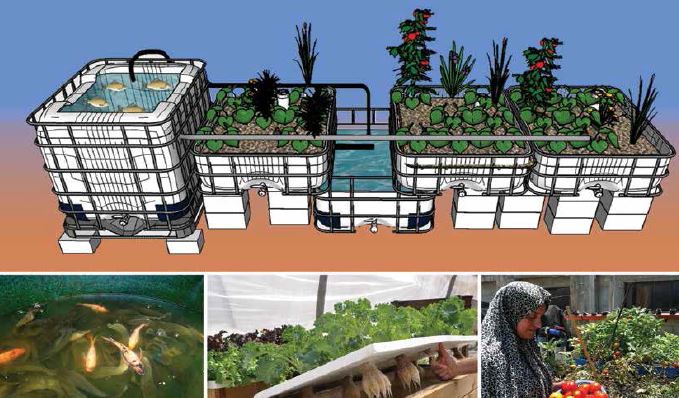Small-scale aquaponic food production
Small-scale aquaponic food production
Small-scale aquaponic food production - Integrated fish and plant farming

Christopher Somerville
FAO Consultant
Ireland
Moti Cohen
FAO Consultant
Israel
Edoardo Pantanella
FAO Consultant
Italy
Austin Stankus
FAO Consultant
Italy
and
Alessandro Lovatelli
FAO Aquaculture Branch
Italy
FOOD AND AGRICULTURE ORGANIZATION OF THE UNITED NATIONS
Rome, 2014
Preparation of this document
This technical paper showcases current wisdom in aquaponics, focusing on small-scale production. The publication is divided into nine chapters and nine appendixes, with each chapter dedicated to a specific facet of an aquaponic system. The target audience is agriculture extension agents, aquaculture officers, non-governmental organizations, community organizers, companies and individuals – worldwide. The intention is to bring a general understanding of aquaponics to people who previously may have only known about one aspect, i.e. aquaculture agents without experience in hydroponics, and vice versa.
This publication does not provide a prescriptive approach to aquaponics; instead this is a resource paper and includes description and discussion of the major concepts needed for aquaponics. A broad range of parties may find interest in aquaponics, especially those whose programmatic focus incorporates at least one of the following topics: sustainable agriculture, resilient methods of domestic food production, or urban and peri-urban food security. Although not strictly necessary, some experience with vegetable and/or fish production would be advantageous for the reader. This publication is written in a style designed to be digestible by a non-technical reader. This technical paper includes diverse subjects from aquaculture to hydroponics, water chemistry to ecosystem balance and technical aspects of plumbing and construction; the challenge has been to provide a bridge towards common understanding of the broad field of aquaponics, using adequate technical details in substantial depth without allowing the publication to become unwieldy and unusable.
This publication is the product of practical experience with small-scale and commercial aquaponic systems, and was developed to share the lessons and current knowledge learned so that fledgling farmers can benefit from these experiences.
This publication was prepared in recognition of multiple FAO strategic objectives, major areas of work and regional initiatives; small-scale aquaponic systems reinforce interventions of the regional water scarcity initiative, and support the major area of work regarding sustainable intensification of agriculture through the efficient use of resources.